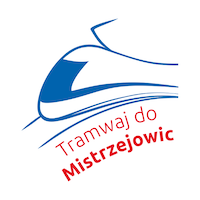Trams not only serve as a convenient and environmentally friendly means of public transport. For the people of Krakow, they are an important part of the city’s culture and history. Almost 123 years have passed since the first run of Krakow’s electric tram, but the origins of public transport go back a little further.
How did it all begin?
The year 1875 is considered the beginning of public transport in Krakow, when the first regular horse-drawn omnibus line was launched. Its route started from under the Main Railway Station and ended at Podgórski Bridge in the Kazimierz district.
The history of the trams themselves begins in November 1881, when the City Council of Krakow, under an agreement concluded with the Belgian Bank, granted permission for the “installation and maintenance of an iron railway called the tramway”. A year later, the first ceremonial run of the narrow-gauge horse-drawn tramway took place, and proceeds from ticket sales were donated to the construction of the Adam Mickiewicz monument.
The first tram crew ran along the route from the railway station to Mostowa Street in Kazimierz, where a tram depot was built. The carriages came in winter and summer versions and were divided into two classes: I and II. By1900, the horse-drawn tramway carried over 1.5 million passengers in Krakow.
Electrification
Electric trams appeared somewhat later. The commissioning of the first narrow-gauge tram line with a fleet of 17 electric carriages from the Wagon and Machine Factory in Sanok took place in 1901, and the ceremonial opening was performed by the city mayor Józef Friedlein. The success of electrification meant that from 1902 trams in Krakow were already running on 4 lines.
The following years also brought many important changes. As a result of the First World War, a large number of men were mobilised for the front and around 180,000 people left the city. The perceived shortage of workers meant that women also became tram drivers from 1916 onwards. The reconstruction of the tramway infrastructure actively started after the end of the war. First, the tram cars and tracks were repaired. Subsequently, the tram traffic system was changed from left-hand to right-hand traffic, and by 1925 there were already six tram lines in operation.


